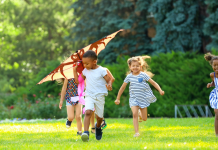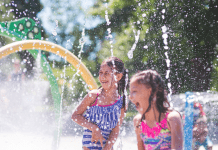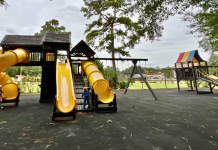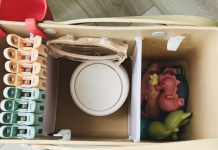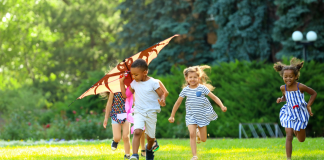*Thank you to BeBe Harrison for this guest post!
As a working mom of three, 2020 meant a lot of redefining. Redefining school. Work. Vacations and family time. For many families, it’s also meant redefining how we think of our outdoor spaces. Beyond the basketball hoop and fire pit is a whole habitat waiting to be unveiled. And by “habitat,” I don’t just mean the place where you send the wild ones once the online school day is complete.
Your Lowcountry backyard can be a suburban wildlife sanctuary, ripe with learning opportunities and a chance to do your part to address our ever-changing climate.
Human or wild, we all have four basic needs to survive: food, water, shelter, and a place to raise young. Working together to bring those essentials to your backyard can bring your family together and the wildlife to you.

Taking Care of Nature, Starting in Your Own Backyard
Ring the dinner bell. If you are reading this, chances are you are already providing food sources in the way of feeders – seed, nectar, corn, or even mealworms. These are great ways to bring birds closer to home and spark curiosity in your children. The landscaping you select can give you a break from “setting the table” and provide a year-round, self-serve buffet of seeds, berries, nuts, fruit, and sap for birds, insects, and animals.
One of our family’s favorite backyard plants is the American Holly. Its foliage makes for striking natural holiday arrangements and its berries attract migrating cedar waxwings by the hundreds in the spring. Flowers like purple coneflower, native milkweed, and black-eyed Susans do triple duty providing nectar for pollinators, foliage for hungry caterpillars, and seeds for birds. Native plants also come with the added benefits of being drought-resistant and climate-friendly. Their roots are accustomed to the Lowcountry and can capture and hold carbon that may otherwise be contributing to our rapidly changing climate.
Splish splash. Water is an essential element but need not be a costly addition. Any repurposed item that resembles a shallow basin, no more than three inches deep, can serve as a birdbath. If the container is too deep or slippery, add gravel or stones to the bottom. Creating a homemade birdbath from clay pots and a plant saucer is a great craft that can involve the whole family. Children can even get creative and decorate their custom water feature.
Cleaning your room is so overrated. Mother Nature is a bit messy and her creatures find comfort in that. Wildlife needs places to shelter from the extremes of heavy rain to sizzling heat. When surveying your backyard landscaping, if you cannot see through, around, or into it, your visitors will likely thank you. Try dense evergreen shrubs, leaving a corner of your yard not mowed, a stack of rocks, or a “toad abode” – made from an overturned clay pot to provide shade for amphibians.
The birds and bees of birds and bees. Many of the places you provide for cover can double as safe places to raise young. Your natural habitat can be supported by man-made bird, bat, butterfly, or bee houses. Is there anything more fun than lifting up a toddler to peek into a nest that once had four eggs and now has four squiggly necked, screaming fuzzballs?
With these four elements- food, water, shelter, and places to raise young, you’re ready to roll out the welcome mat, but don’t stop there. Consider joining the record numbers of people certifying their yards as Certified Wildlife Habitats with the South Carolina Wildlife Federation. All you need to do is visit the website, fill out the online application, and you are on your way. This is a wonderful way to involve your whole family in exploring and learning about their own backyard while making a lasting difference for wildlife. Join me in taking the kids outside, trying some backyard habitat enhancements of your own, and inspire your neighbors to do the same.
About the Author
 BeBe Dalton Harrison is a mom of three boys and an aquatic education professional. She enjoys spending time in the outdoors, especially fishing. Harrison’s passion for fishing and aquatic education can be traced back to her parents who took her fishing in the Charleston Harbor almost every weekend when she was a child. She worked with the South Carolina Department of Natural Resources to develop its first-ever aquatic education program and now specializes in introducing new anglers to the sport of fishing with an understanding of angler ethics and conservation through her company, Angling Women. Harrison and her boys spend a lot of time outside doing hands-on activities whether in the backyard, the marsh, or on the water.
BeBe Dalton Harrison is a mom of three boys and an aquatic education professional. She enjoys spending time in the outdoors, especially fishing. Harrison’s passion for fishing and aquatic education can be traced back to her parents who took her fishing in the Charleston Harbor almost every weekend when she was a child. She worked with the South Carolina Department of Natural Resources to develop its first-ever aquatic education program and now specializes in introducing new anglers to the sport of fishing with an understanding of angler ethics and conservation through her company, Angling Women. Harrison and her boys spend a lot of time outside doing hands-on activities whether in the backyard, the marsh, or on the water.


